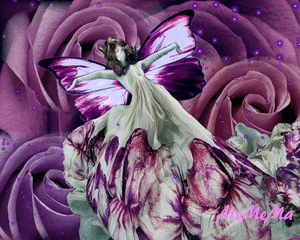Rule #1: The most important of all...Sign your artwork.
Rule #2: Sign your name so that people can read it. To repeat: Sign your name so that people can read it. You don't necessarily have to sign legibly on the front of the art, but make sure you clearly sign or otherwise label or identify your art as being by you-- somewhere, anywhere-- as long as it's on or attached to the art.
For instance, my real name is Monica but my artistic name is MoMeMa. I had used this name since I started creating arts back in college, MoMeMa is a combination of two letters of my first name and my two last name. It sounds different and some what difficult for some people to pronounce, but it is ME!.
Helpful tips:
→Sign your art in the same medium in which you create it (except for graphics or limited editions, which are generally signed in pencil). For example, sign a watercolor in watercolor, an acrylic in acrylic, and an oil painting in oil paint. When you sign in a different medium, you increase the chances of someone will eventually question whether or not the art was actually done by you. Hey-- it happens all the time.
→Placing your signature or monogram into the compositions of graphics or limited editions (signing in the plate or composition) in addition to signing them by hand provides extra means of identification and can also "brand" your work or even protect it against people who try to copy it.
→ Sign all of your art in pretty much the same way. Signatures should be consistent in size, coloration, location, style (written or printed), and other particulars. That way, people who aren't necessarily familiar with all the styles of art you've produced over your entire career will at least be able to recognize your signature. Signing your name in many different ways or locations eventually makes it easier for forgers to sign fakes in various ways and claim they're by you.
→Date your art. You may not think this is important now, but after you've been making art for several decades, you'll understand why. If you don't want to date your art on the front, date it inconspicuously on the back-- or even on the edge. Obviously, dating your art minimizes any guesswork as to when something was completed. The better known you become, the more important dates are for anyone interested in your evolution as an artist... and that includes those who'll be curating your retrospectives.
→ If you make works on paper, you may want to use an embossing stamp or even a fingerprint in addition to your signature, thereby making the act of completion more formal and official. Art with your signature and a stamp or a fingerprint is also more difficult to replicate, forge or copy.
→Sign your art as soon as its done, preferably while the paint or clay or whatever medium it's in is still wet or pliable. Collectors prefer signatures that are "embedded" in the art because those types of signatures are the most difficult to forge or duplicate.
→Don't sign on top of a varnished painting or completed sculpture because the signature then looks like it was added later.
→Your signature should not be so bold or overbearing that it actually interferes with or detracts from the composition unless you purposefully intend for that to be a consistent characteristic of your art.
→Remember, you're not always going to know where every piece of your art is or where it's journeys will end. And you certainly won't be around for all eternity to vouch for it. Those who buy your art today will not necessarily own it tomorrow (or even remember that you were the artist). Regardless of where your art ends up or who eventually owns it, make sure that it will be treated with care and respect at all times, and never relegated to the "I don't know" pile. By taking the signing your art seriously, you maximize the chances that people will be able to identify and remember you through your life's work for generations to come.












I walked through your sites to see all that beautiful things. What beautiful and what an inspiration. Fantastic. I'll definitely be back to see more. But admire your work, it's so very beautiful. I am a beginner with painting and a longer time I do stamping (my other blog). But I always try to come loose and letting me lead. But that's a long way to go.
ReplyDeleteKind regards
Marja